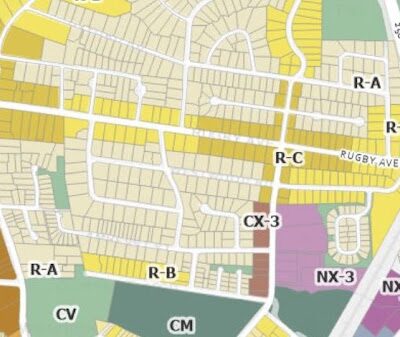|
Violent crimes per 1,000 residents
Albemarle: 1.14
Charlottesville: 5.91
State average: 2.27
Population within one mile of a park/grocery/school
Albemarle: 57-70 percent
Charlottesville: 95-99 percent
Metropolitan Planning Area: 70-80 percent
Median household income
Albemarle: $64,206
Charlottesville: $38,369
State: $60,316
Residential density
Rural area: 0.08 dwellings per acre
Urban area: 0.92 dwellings per acre
Location of new permitted dwellings
Rural area: 14 percent
Urban area: 86 percent
Renter-occupied housing
Albemarle: 35 percent
Charlottesville: 56 percent
State: 31 percent
Dwellings without kitchens
Albemarle: 0.6 percent
Charlottesville: 2.2 percent
State: 0.5 percent
Average household water consumption (monthly gallons per connection)
Albemarle County Service Area: 3,887
Charlottesville: 3,703
State: 3,808
Average monthly bill for household water
Albemarle: $31.88
Charlottesville: $24.82
Population within one mile of a bus stop
Albemarle: Roughly 60 percent
Charlottesville: 100 percent
Number of car crashes (per 1,000 licensed drivers)
Albemarle: 2.7
Charlottesville: 3
State: 2.1
Average commute time (in minutes)
Albemarle: 21.3
Charlottesville: 15.9
State: 26.9
Daily vehicle miles traveled per household
Metropolitan Planning
Area: 84.8 State: 75.5
Number of green buildings in Albemarle and Charlottesville
Commercial: 55
Residential: 550
Land in protected areas
Albemarle: 33.6 percent
Charlottesville: 11.5 percent
|
For all the local Tea Party bluster over the $999,000 Livable Communities Planning Grant, the Thomas Jefferson Planning District Commission (TJPDC) has yet to transform city and county comprehensive plans into socialist tracts. In fact, the TJPDC’s Livability Performance Measurement System —unveiled June 23 before a 50-person crowd that included Albemarle supervisors, City Council candidates and Delegate David Toscano—quantifies the effects of our personal liberties in a collection of statistics about how and where we choose to live.
Under categories like “Housing and Built Environment” and “Natural Resources,” the measurement system gathers baseline data for local officials to consider holistically while they revise Albemarle and Charlottesville comprehensive plans. The data, available at 1-community.org, compares resources between Albemarle and Charlottesville, urban and rural areas, and commercial and residential buildings, and concerns everything from affordable housing stock to the community water supply.
During the June 23 event, the TJPDC attracted comments from statistical nitpickers (“Would per capita be more useful?”) and conclusion-jumpers (“Urban streams are in better shape than rural ones. Cool.”). Remarks about redistribution of wealth and United Nations conspiracy theories were noticeably absent. And one person suggested that “an open bar would help to increase the number of honest opinions.” Sloshed or no, the stats deserve your consideration, just as the comprehensive plans deserve your thoughts. C-VILLE excerpted a few numbers.





